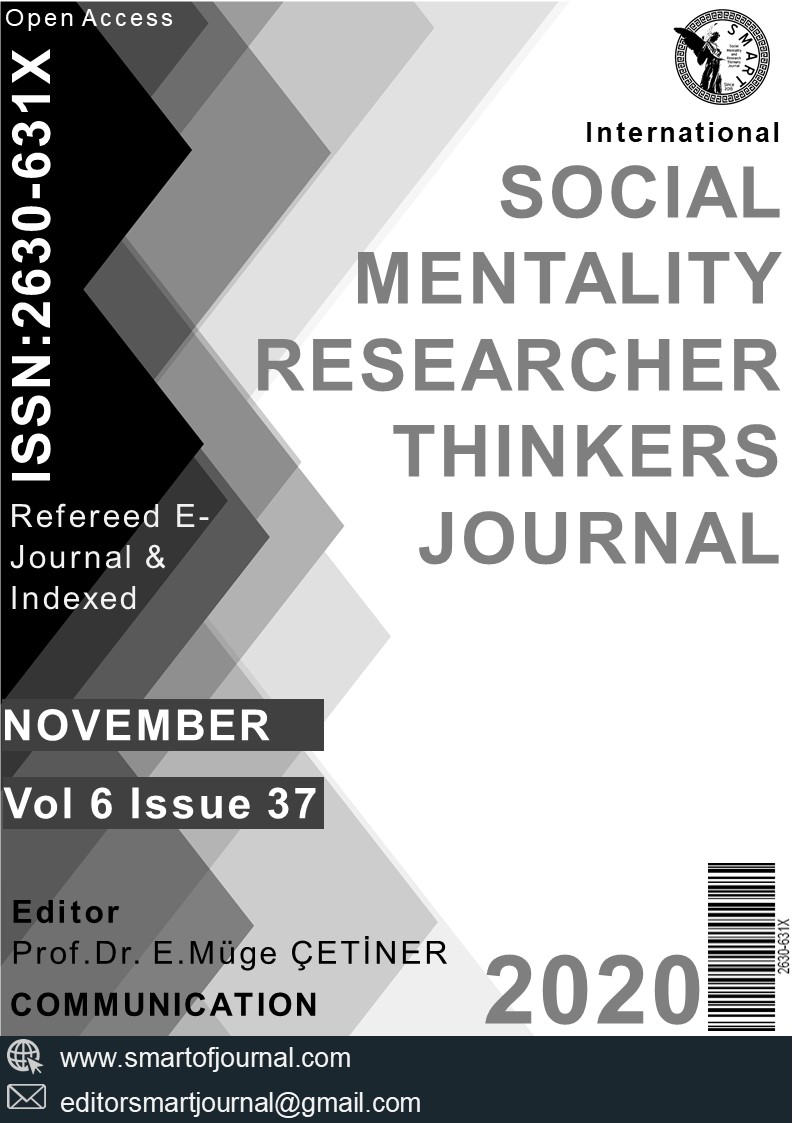Author :
Abstract
Keywords
Abstract
This study aims to determine whether there is any change in restaurant preferences of consumers before and after Covid-19. If there is a change, does this differ depending on the gender, age, marital status, children, education and income level of consumers? This research is a mixed-method study in which quantitative and qualitative methods are used together. The study was conducted between March and May 2020 when there was curfew in all countries due to Covid-19. Participants of the study were selected from individuals over the age of 18 using the convenience sampling method. 313 samples were included in the study. The data was obtained from the participants through online tools using a questionnaire and feedback form. The quantitative data was compared by determining frequency, percentage and average values. The qualitative data was combined with content analysis within the framework of specific concepts and themes. The results indicate that Covid 19 has influenced restaurant preferences of customers and there is a change in preferences depending on the gender, age, marital status, children, education and income level of consumers. When the quantitative and qualitative findings are compared, the statements of the participants included in the qualitative findings indicate that they have expectations mostly related to the matter of hygiene. It is seen that they want close attention to be paid to hygiene conditions from food supply to production and presentation. In addition, there is reluctance to consume raw foods on menus now.
Keywords
- Anderson, E.W. (1996). Customer satisfaction and price tolerance, Marketing Letters, 7(3), 265-274.
- Anderson, E.W. (1996). Customer satisfaction and price tolerance, Marketing Letters, 7(3), 265-274.
- Belk, R.W. (1975). Situational variables and consumer behavior. Journal of Consumer Research, 2 (3), 157- Büyüköztürk. Ş. (2006). Soysal bilimler için veri analizi el kitabı, Ankara: Pegem Yayınları
- Cevizkaya, G. (2015). Tüketicilerin Etnik Restoran İşletmelerini Tercih Nedenleri: İstanbul’da Bir Araştırma. Balıkesir Üniversitesi Sosyal Bilimler Enstitüsü. Yayımlanmamış Yüksek Lisans Tezi.
- Clark, Mona. & Wood, Roy. (1998). Consumer loyalty in the restaurant industry: a preliminary exploration of the ıssues. International Journal of Contemporary Hospitality Management, 10 (4), 139–144.
- Creswell, J.W. (2013). Research Design: Qualitative, Quantitative and Mixed Methods Approaches. Thousand Oaks, CA:Sage.
- Ghebreyesus, T.A. (2020). WHO Director-General's opening remarks at the media briefing on COVID-19.https://www.who.int/dg/speeches/detail/who-director-general-s-opening-remarks-at-the-media-briefing- on- covid-19---11-march-2020 (E.T: 22.03.2020).
- Goldman, K. (1993). Concept selection for independent restaurants. Cornell Hotel and Restaurant Administration Quarterly, 34(6), 59-72.
- HRI Food Service Sector Türkiye Raporu). (2016). HRI Food Service Sector Report for Turkeyhttps://apps.fas.usda.gov/newgainapi/api/report/downloadreportbyfilename?filename=Food%20Service%20- %20Hotel%20Restaurant%20Institutional_Ankara_Turkey_1-3-2017.pdf
- Heung, V. C. (2002). American theme restaurants: A study of consumer's perceptions of the important attributes in restaurant selection. Asia Pacific Journal of Tourism Research, 7(1), 19-28.
- Johns, N. & Pine, R. (2002). Consumer behavior in the food service industry: A Review. International Journal of Hospitality Management, 21, 119-134.
- Kama, S. (2015). Tüketicilerin restoran tercihlerinde fiziksel kanıtların rolünün incelenmesi üzerine nitel bir araştırma (Master's thesis, Anadolu Üniversitesi).
- Koçbek, A. D. (2005). Yiyecek ve içecek sektöründe hizmet kalitesi ve müşteri memnuyeti: etnik restoranlara yönelik bir araştırma (Master's thesis, Anadolu Üniversitesi).
- Kotler, P. (1973). Atmospherics as a marketing tool. Journal of Retailing, 49 (4), 48-64
- Kotler, Philip. & Keller, Kevin, Lane. (2009). Marketing Management. USA: Pearson Prentice Hall.
- Kotler, Philip. & Armstrong, Gary. (2012). ). Principles of Marketing. New York: Pearson Prentice Hall.Kotler, P. & Levy, S.J. (1969). Broadening the concept of marketing. Journal of Marketing, 33, 10-15. Lundberg, D. E. (1989). The hotel and restaurant business (No. Ed. 5). Van Nostrand Reinhold.
- Mill, R. C. (2007). Restaurant management: Customers, operations, and employees (3rd ed.). Upper Saddle River, NJ: Pearson Prentice Hall.
- Parasuraman, A., Zeithaml, V.A. & Berry, L.L. (1988). Servqual: a multiple item scale for measuring consumer perceptions of service quality. Journal of Retailing, 64 (1), 12-40.
- Sriwongrat, C. (2008). Consumers' choice factors of an upscale ethnic restaurant (Doctoral dissertation, Lincoln University).
- Tabachnick, B.G. & Fidell, L.S. (2013). Using Multivariate Statistics. Pearson, Boston.
- TAVAK. Türk Avrupa Eğitim ve Bilimsel Araştırmalar Vakfı (TAVAK) (2018). Türkiyedeki yeme içmesektörünün boyutları Gastronomi Ekonomisi Araştırmaları 2018. https://tavakvakfi.org/wp- content/uploads/2019/01/2018-Gastronomi-Ekonomisi-2018-converted.pdf
- Tauber, E.M. (1972). Marketing notes and communications why do people shop?, Journal of Marketing, 36, 46-59.
- Tekin, Ö. A., Turhan, E. A., Pamukçu, H. & Turhan, A.A. (2020). COVID-19 sürecinde Türkiye’de iç turizm talebi: Mevcut durum ve beklentiler, Araştırma Raporu, Antalya.
- Walker, J. R. (2007). Study Guide to Accompany The Restaurant: From Concept to Operation, 5e. John Wiley & Sons.
- Walters, C. G. & Bergiel, B.J. (1989). Consumer behavior: a decision-making approach. Cincinnati: South- Western Publications.
